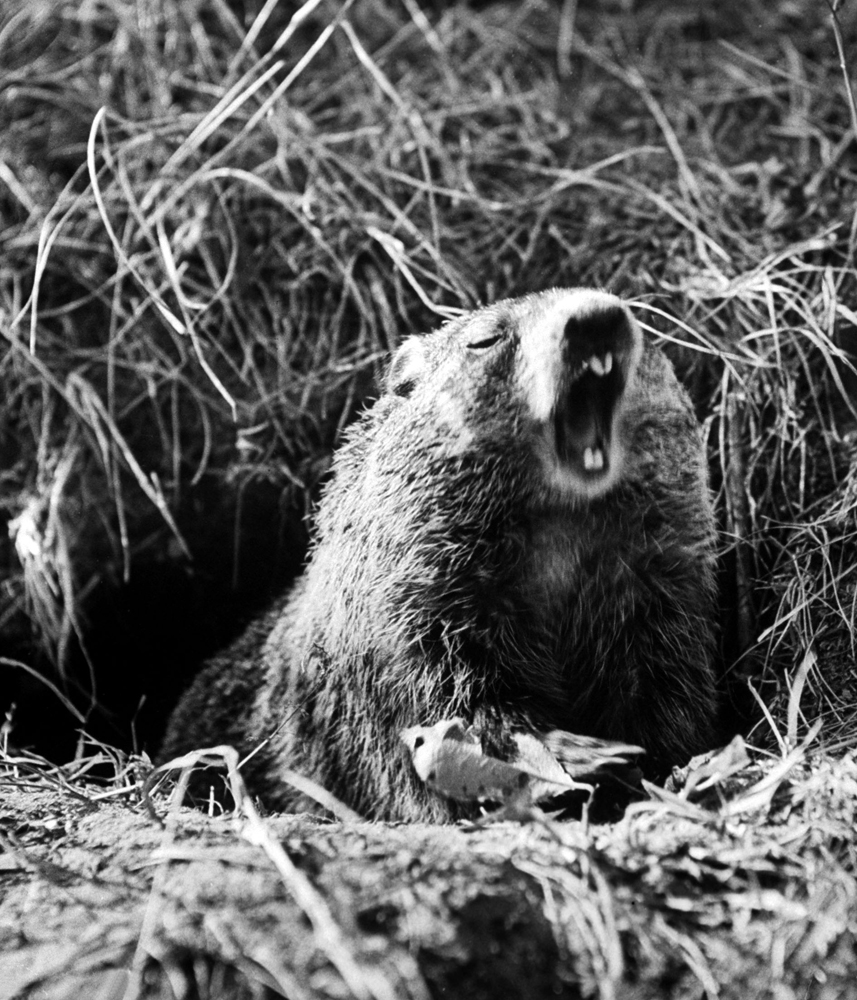
The first Groundhog Day celebration wasn’t such a picnic for Punxsutawney Phil’s progenitors. When Punxsutawneyans gathered on a hilltop known as Gobbler’s Knob on this day, Feb. 2, in 1887, they did so not just to celebrate the weather-forecasting wizardry of the groundhog — the rodent was also on the menu.
Predicting the length of winter based upon whether or not an animal saw its shadow was nothing new to the German immigrants who settled Pennsylvania, although in the old country they relied more often on badgers and bears. Europeans had long marked winter’s midpoint on Feb. 2 by celebrating Candlemas Day, a festival of lights that also included a formula for predicting the arrival of spring. As explained in an English folk song:
If Candlemas be fair and bright,
Come, winter, have another flight;
If Candlemas brings clouds and rain,
Go winter, and come not again.
While the same principle applied to Groundhog Day, Punxsutawney inserted the notoriously grumpy, burrow-dwelling rodent into the formula as a kind of meteorological middleman. It also became a regional delicacy, with a flavor described by locals as “a cross between pork and chicken,” according to Pennsylvania historian Christopher R. Davis.
In the 1880s, per Davis, groundhog was the cuisine of choice at the Punxsutawney Elks Lodge. Devotees later formed the Groundhog Club, which hosted both the annual Groundhog Day ceremony and a summertime groundhog hunt followed by a picnic featuring a variety of groundhog dishes and a “groundhog punch” that sounds equally appetizing — a combination of vodka, milk, eggs, orange juice “and other ingredients,” Davis writes.
As tastes changed and Punxsutawney Phil’s status rose, the Groundhog Club stopped hunting his brethren and began catering to him instead. Groundhog is no longer on the menu at the annual Groundhog Picnic, and “groundhog punch” has morphed into an “elixir of life” that reportedly keeps Phil young and explains why the same groundhog has been predicting spring in Pennsylvania for over a century.
Members of today’s Groundhog Club claim that Phil — whom they call “Seer of Seers” — is an infallible prognosticator, with a 100% accuracy rate.
Mathematically, that’s not exactly true. As of last year, Phil’s accuracy rate was in fact 39% — less than half that of New York City’s go-to groundhog, Staten Island Chuck, whose predictions have been correct 82% of the time. Although not quite the celebrity Phil has become, Chuck is arguably America’s most reliable shadow-seer.
“You can’t argue with a good product,” the Staten Island groundhog’s handler once told TIME. “You want accurate readings, you go to Chuck.”
Read more about Chuck, here on Time.com: Q&A with Groundhog Handler Doug Schwartz
The Groundhog: An Appreciation

Read next: 6 Things to Know About Groundhog Day
More Must-Reads from TIME
- Donald Trump Is TIME's 2024 Person of the Year
- Why We Chose Trump as Person of the Year
- Is Intermittent Fasting Good or Bad for You?
- The 100 Must-Read Books of 2024
- The 20 Best Christmas TV Episodes
- Column: If Optimism Feels Ridiculous Now, Try Hope
- The Future of Climate Action Is Trade Policy
- Merle Bombardieri Is Helping People Make the Baby Decision
Contact us at letters@time.com